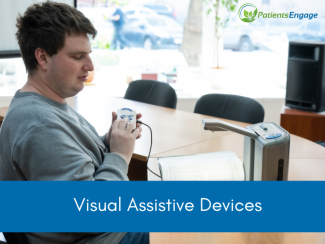
According to the WHO, about 2.2 billion people worldwide suffer from near or distant vision impairment. Vision impairment is seen across all ages. Recent technological advances have ensured that people with low vision can continue their daily life with the aid of visual assistive devices or equipment. T.V Aishwarya educates us on the availability of devices in India, and how they improve independent living.
What are visual assistive devices? Who can it benefit?
Visual assistive devices are technological tools designed to help individuals with visual impairment or low vision access information, navigate their surroundings, and perform daily tasks more independently. These devices use various technologies to convert visual information into formats that can be perceived through other senses, such as touch, sound, or a combination of both. They aim to enhance the independence, mobility, and overall quality of life for people with visual impairment.
Why is awareness on this important?
Awareness of visual assistive devices is crucial for inclusivity, empowerment, safety, and equal opportunities for individuals with visual impairment. It fosters technological advancements, breaks down societal barriers, and promotes policy changes for a more accessible and compassionate society.
Pls provide a brief description and use of these devices:
Audio/Listening Devices:
Description: These devices provide audio output to convey information through sound, such as talking books, and audio description devices.
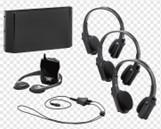
https://asuspeechandhearingclinic.org/hearing/rehabilitation-services/a…
Use: Persons with vision impairment use them to access digital content, read books, and receive audio descriptions during movies or live performances.
Cane/Stick:
Description: A long, slender tool used for mobility and navigation, typically made of metal or lightweight materials.
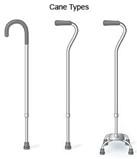
https://www.drugs.com/cg/how-to-choose-and-use-a-cane.html
Use: Persons with vision impairment use canes to detect obstacles, navigate their surroundings, and gain spatial awareness.
Computer/Phone Apps/Virtual Assistants:
Description: Software applications or virtual assistants that provide accessible interfaces and voice-based interaction on computers and smartphones.
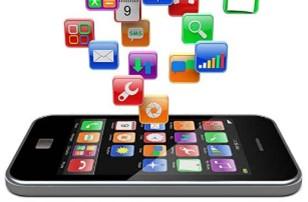
https://www.everydaysight.com/best-apps-for-visually-impaired/
Use: These apps help persons with vision impairment perform various tasks, access information, and control their devices using voice commands.
Magnifiers:
Description: Optical devices that enlarge text, images, or objects for easier viewing.

Hand-held and Video magnifiers. (https://lowvisionaids.org/blog/assistive-technology-for-visually-impair…)
Use: Persons with vision impairment use magnifiers to read small print, examine details, and access visual information more comfortably.
Electronic Books/Files:
Description: Digital books and files accessible through computers, tablets, or e-readers.
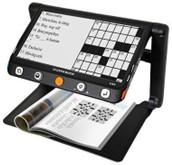
https://thelowvisionstore.com/
Use: Persons with vision impairment can read electronic books using screen readers or magnification software, offering flexible and adjustable reading experiences.
Navigation Guides (Indoor and Outdoors):
Description: GPS-based systems or apps that provide auditory cues and directions for navigation.
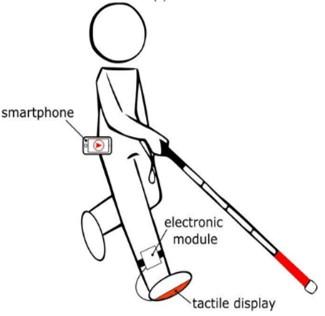
https://www.researchgate.net/figure/The-assistive-navigation-system-a-m…
Use: These guides help persons with vision impairment navigate both indoor environments (e.g., shopping malls) and outdoor areas with spoken directions.
Images (High Resolution with Descriptions/Alt Text):
Description: High-quality images with descriptions or alternative text provided for accessibility.
Use: Persons with vision impairment can understand the content of images through descriptions read by screen readers or other assistive technologies.
Large Prints/Select Fonts:
Description: Printed materials with enlarged text and carefully selected fonts for improved readability. Eg. keyboards, phones, timers etc.
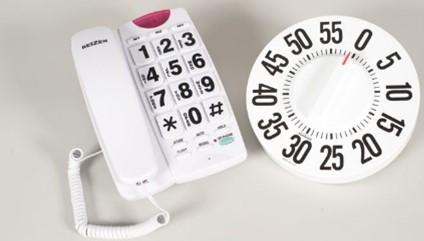
Use: People with low vision can read printed materials more easily when the text is larger and presented in clear, accessible fonts.
Notification Ringtone/Bells:
Description: Customized audio signals or tones to alert persons with vision impairment of incoming messages, calls, or events.
Use: These auditory cues help individuals know when they receive notifications on their devices or when someone is at the door.
Modified Keyboards:
Description: Keyboards with tactile markings or larger keys for easier use and identification.

Use: Persons with vision impairment benefit from modified keyboards that provide tactile feedback, enabling them to type accurately and efficiently.
Display Options (Zoom Feature, Preferable Light, etc.):
Description: Customizable display settings on electronic devices to enhance visibility, such as screen zoom, contrast adjustments, and preferred lighting conditions.
Use: These options enable persons with vision impairment to tailor their viewing experience and improve legibility.
Notetaking and Reading Apps:
Description: Mobile apps that assist with note-taking, document reading, and organization of information.
Use: These apps help persons with vision impairment stay organized, take notes, and access digital documents with ease.
Type of Pen, Pencil, and Paper to Use:
Description: Specialized writing instruments and paper with tactile features to aid writing and reading.
Use: Persons with vision impairment can use these tools for note-taking, drawing, or writing Braille.
Tactile Materials (Raised Dot, 3D Models, etc.):
Description: Physical materials with raised textures or shapes, including Braille texts and tactile graphics.
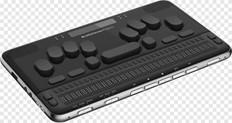
https://www.pngegg.com/en/png-ixmch
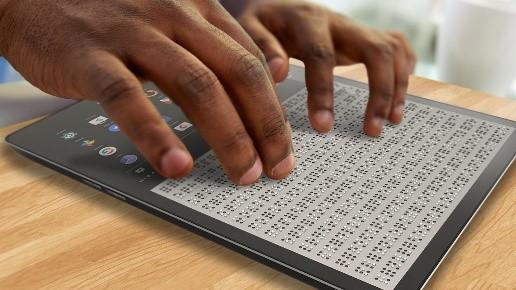
https://aaccommunity.net/assistive-technologies-devices-for-visual-impa…
Use: Persons with vision impairment use tactile materials to read Braille, understand graphics, and gain a tactile understanding of objects and concepts.
How can patients avail of these devices? Do they need a prescription?
Availing visual assistive devices may vary depending on the specific device and the healthcare system in a particular country. In general, here are some steps that persons with vision impairment can take to obtain visual assistive devices:
- Consult an Eye Care Professional: If a person is experiencing vision impairment, the first step is to consult an eye care professional, such as an optometrist or ophthalmologist. They can assess the individual's vision and provide a diagnosis or recommendation for assistive devices based on their specific needs.
- Obtain a Prescription: In many cases, a prescription from an eye care professional is required to obtain certain visual assistive devices. The prescription will specify the type and strength of the device needed, which can be crucial for insurance coverage or reimbursement.
- Seek Advice from Low Vision Specialists: Low vision specialists are eye care professionals with expertise in providing solutions and recommendations for persons with vision impairment. They can offer guidance on suitable assistive devices and provide training on how to use them effectively.
- Contact Rehabilitation Centers or Organizations: Many countries have rehabilitation centers or organizations that cater to persons with vision impairment. These centers can help assess needs, provide training, and assist in obtaining visual assistive devices.
- Explore Government Programs and Insurance Coverage: In some regions, government programs or insurance policies may cover the cost of certain visual assistive devices. It's essential to research available benefits and coverage options.
- Visit Specialized Stores or Online Retailers: There are specialized stores or online retailers that offer a wide range of visual assistive devices. Persons with vision impairment can purchase devices directly from these sources if they have the necessary information or prescriptions.
It's important to note that the process of obtaining visual assistive devices can differ based on the country's healthcare system and available resources. Some devices may require a prescription for purchase, while others may not. Additionally, the coverage and reimbursement policies may vary, so it's advisable to consult with eye care professionals or relevant organizations to determine the best course of action for obtaining visual assistive devices.
How do you guide patients on which device is best suited for them?
As a colleague of an optometrist and rehabilitation professional, I have observed that they guide patients with vision impairment through a comprehensive vision assessment. They take the time to understand each patient's specific needs and how their daily activities are affected by their vision challenges. Based on this understanding, they demonstrate various visual assistive devices, explaining the benefits and functionalities of each. They even offer trial periods for certain devices to ensure they are suitable for the patients. Customizing solutions when necessary, they also provide training on how to use the devices effectively. Throughout the process, they consider the patients' budgets. Their goal is to empower patients to make informed choices about the visual assistive devices that best enhance their independence and improve their quality of life.
Are all devices expensive? Are any free-of-cost? How do patients afford them (insurance, private cost..)?
In India, the affordability of visual assistive devices varies. While some advanced devices can be expensive, there are more basic options available at lower costs or even for free. Government programs, NGOs, and community support initiatives often provide financial assistance or subsidies for those in need. Private insurance may cover certain devices, but coverage can vary. Overall, a combination of support systems helps patients in India afford visual assistive devices, ensuring greater accessibility for individuals with vision impairment.
How has artificial intelligence impacted the world of the visually impaired? Future trends?
Artificial intelligence (AI) has revolutionized the lives of persons with vision impairment. Advanced assistive technologies like screen readers and object recognition tools enhance accessibility. AI-driven navigation aids provide real-time auditory cues for safer mobility. In the future, wearable devices, gesture and voice recognition, and AI in medical diagnosis promise even greater independence and inclusion for persons with vision impairment. AI's impact spans education, employment, and social interaction, fostering a more accessible world for everyone.

T.V. Aishwarya is a Rehabilitation Counselor at the Institute for Vision Rehabilitation, LV Prasad Eye Institute, where she has been serving since 2013. As an expert in her field, she specializes in organizing and leading Assistive Technology workshops tailored to individuals with vision impairment. Her passion lies in exploring cutting-edge technologies, evaluating their potential for people with visual challenges, and providing valuable feedback for improvement. Having experienced visual impairment herself, Aishwarya wholeheartedly embraces and advocates for the use of beneficial technology to enhance the lives of others facing similar circumstances.







